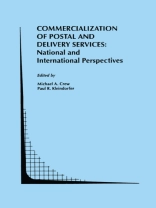xiii * We have almost the cheapest letter price in the OEe D. * We’ve quadrupled the retail outlets where you can buy stamps, but closed three quarters of our Post Offices. On time delivery is better than 97%. * The workforce has been reduced by 40%, with a 25% increase in volumes over the period. Real unit costs, measured by total real expenditure divided by total volumes, have been reduced by over 20%. What do these results and achievements mean for policy setters around the world? In particular, do these results for New Zealand Post prove that it is a commercial business, and what are the lessons for other postal businesses? Market Forces New Zealand Post presently has a limited letter monopoly, a 45 cent letter price against an 80 cent competitive floor price. The existence of this level of protection somehow negates the company’s commercial achievements. The combination of high efficiency and low prices cannot persuade everyone that the results are not my view, are the only ones that can solely monopoly driven. Market forces, in answer my question: is New Zealand Post a commercial organization? We need the test offree and open competition to see whether we’ve got the business formula right. Before advancing this argument, which in essence is the case for deregulation, it may be useful to distinguish between market behavior and Post behavior.
Michael A. Crew & Paul R. Kleindorfer
Commercialization of Postal and Delivery Services: National and International Perspectives [PDF ebook]
Commercialization of Postal and Delivery Services: National and International Perspectives [PDF ebook]
ซื้อ eBook เล่มนี้และรับฟรีอีก 1 เล่ม!
ภาษา อังกฤษ ● รูป PDF ● ISBN 9781461527848 ● บรรณาธิการ Michael A. Crew & Paul R. Kleindorfer ● สำนักพิมพ์ Springer US ● การตีพิมพ์ 2012 ● ที่สามารถดาวน์โหลดได้ 3 ครั้ง ● เงินตรา EUR ● ID 4613763 ● ป้องกันการคัดลอก Adobe DRM
ต้องใช้เครื่องอ่านหนังสืออิเล็กทรอนิกส์ที่มีความสามารถ DRM












